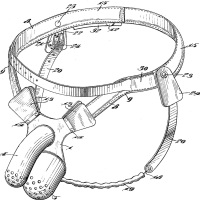
I assume that most of us have a morning routine when we get ready for work or just to prepare for the day. I thought I’d share mine with you. By the way, this is not an advertisement for these products in the sense that I am not getting compensated for discussing the products in my grooming routine.* I mention them because they are products that I love using, and they make me feel fresh and clean each day. When I take care of my appearance, I feel more confident during the day, making my whole day better. This is all about sharing my routine and the products that I love to use.
I have a pretty set routine once I step in the shower. Most of my showering products come from Tame the Beast. I begin by shampooing my hair with their Tingle Shampoo. It feels great and it does tingle the scalp. This shampoo includes ginseng and caffeine to help wake me up, and is scented with eucalyptus, peppermint, menthol, and extracts of pomegranate, rosemary, lavender, and citrus. It smells great and is really invigorating. Next I use Beast’s Gold Wash. Beast Gold is a smooth, great smelling body wash. I love the smell of this. I used to use another body wash they made until they discontinued it, and I went through several others, none of which I liked the smell until I came across the Gold Wash. I don’t know how to describe the scent, but it seems to be a perfect complement for my skin without being overpowering. Once I rinse out the shampoo and rinse off the body wash, I use their Caffeine Conditioner. The conditioner is similar to the shampoo and really leaves my hair feeling very soft. I love the feel of soft hair.
Then comes shaving. I always shave in the shower because it opens up my pores, and I feel like I get a smoother shave. When it comes to shaving, I use products that I like without thinking too much about the cost. While I know beards are more fashionable right now, I’ve never liked facial hair on me. I find a close cropped beard attractive on some men, but mostly, I love a clean shaven man. I also enjoy smooth nether regions. I shave around my penis and balls leaving my pubic hair alone. To me this feels cleaner, and well, it just feels great. I begin with a pre-shaving routine by washing my balls with Manscaped’s Crop Exfoliator Gentle Scrub for the Groin Area. It contains witch hazel, willow bark, and volcanic rock to scrub and clear the skin for a smooth surface and clean slate on which to shave. It is a gentle exfoliant made especially for the groin area. I then use Crux Supply Company’s Pre-Shave Oil. I like using a pre-shave oil because it helps provide a clean, close shave. It has the scent of rosewood, cypress, and bergamot and uses a blend of avocado, almond, jojoba, and hempseed oils that are meant to lift stubble for a “super smooth shave, protect your skin, and lend it a healthy glow.” It only takes a small amount. and I massage it into my face, balls, and around my dick. Trust me, this is a great way to start the day. Now, I’m ready to begin my shaving routine. Another advantage to shaving in the shower is that the warm water makes your scrotum more pliable which in my opinion is better for shaving.
For shaving, I use two different shaving “creams” and two separate razors, one each for the different regions. Pubic hair tends to be thicker and dulls a blade much quicker. By the way, I use Harry’s Razors not only because they are much more economical, but also because I find they are also superior. For my groin area, I use Manscaped’s Crop Gel Clear Lubricating Shave Gel. This stuff is truly amazing, especially if you want the skin down there to be soft and smooth. (Yes, I know you want it to get hard down there , but you still want the skin to feel soft.) this shave gel is clear, moisturizing, and lubricating with a multi-glide formula that means you only need to apply once. A small caveat here, the smell, in my opinion, is not great. It has a very earthy smell to it, but the smell washes off. It is well worth it, as the feeling after shaving is amazing. I’ve used other shave creams for my privates before, and none leave me as smooth as this. It’s like getting waxed but without the pain. It will leave your skin down there feeling soft and smooth all day long. I promise, you will feel the difference.
Before I begin shaving that area, I let the shave gel do it’s thing while I add shaving cream to my face. Here I use Beast’s Butter Shave Cream. Beast’s shave cream smells great, so it sort of hides the smell of Manscaped’s shave gel. It is super-smooth, super-slick, foamless, shave cream that soften my stubble and helps prevent ingrown hairs, fight razor bumps, and deliver an effortlessly gentle blade glide on skin. I let that soften my stubble and moisturize my face while I go back to shave my groin area. As I said before, I use one razor for down there, and another razor on my face. Trust me, you do not want to use the same razor for both. I am not going to go into detail on how I actually shave, as I think everyone has their own shaving techniques. I’ll discuss it only if someone is interested. Once I am finished shaving, I give my hair, face, and body a final rinse and dry off.

Next comes my post-shower routine. I begin with Crux Supply Company’s Post-Shave Tonic. Crux’safter-shave soothes and conditions my face with a powerful boost of witch hazel, that smells nice with notes of rosewood, sage, and bergamot, and leaves my skin irritation-free without the burn of an alcohol-based aftershave. Then, I apply TPCK’s ToppCock Silver Hygiene for Man Parts Leave-On Gel to my groin area. I don’t know about you, but I love feeling dry and fresh down there, and this leaves me feeling that way all day long. It also smells great without making you smell (or taste) like you have perfume on your dick. It also soothes any razor burn, though with the Manscaped products, I think you’d find you won’t have any, and it prevents chafing. Also, because it leaves me dry down there, I don’t have to worry about “sweating my balls off” and then walking out into the cold and windy Vermont winter and subsequently “freezing my balls off.”
I then put on my deodorant and cologne. For deodorant, I only use True Organic of Sweden’s Undercover Agent Unisex Deodorant. It’s a natural deodorant that really works and is free from synthetic aluminum or alcohol. It is mostly made with alum, which is a traditional alternative to many modern deodorants, and it lasts for twenty-four hours. I can’t say enough how much I love this deodorant. It has a nice neutral smell, and it works great, keeping me dry and smelling fresh all day long. I won’t use anything else, and as long as I can get it, I will continue to use it. The only drawback is that I wish I didn’t have to order it from Sweden most of the time. The shipping is fast and efficient. I first used it when I subscribed to Next Gay Thing‘s subscription boxes, which also ships from Europe. I no longer subscribe, even though I found some great products through the samples they sent me, but when they sent me Snail Slime Micellar Water, which is actually made with snail secretions, I decided I didn’t need all these samples anymore. By the way, all orders from True Organic of Sweden always come with a personal handwritten note from the owner in your native language. When I made a comment about how hard it is to get without ordering it from Sweden, Tina, the owner wrote to me to explain that she’d tried to get a good distributor in the US but so far, she hadn’t been successful. Hopefully, she will fine one soon.
To round it all out, I spray a few spritz of my favorite cologne, Estee Lauder Pleasures Cologne for Men. I have used this cologne for over twenty years because it is a subtle smell that does not trigger my headaches. It can really only be smelled if someone is very close to me, and I’ve always received compliments on how great I smell when I wear it. Pleasures is a “daytime “ fragrance that is refreshing and has a spicy lavender and amber scent with base notes of “sandalwood, iridescent ebony, and deep forest moss” I don’t know if that’s exactly how I’d describe it, but I do know that it works great with my personal body chemistry making me smell nice. I’ve tried many other colognes, and would like to find a “nighttime” cologne, but most of them are so strong that they give me a headache. Maybe one day, I’ll find a complementary nighttime cologne, but for now, I’ll stick to Pleasure for day and night.
That’s my morning grooming routine. It may sound like a lot, but I know gay men who have much more elaborate routines with moisturizers and makeup, some subtle, some not so subtle. Honestly, I think my routine is fairly simple. (By the way, I also do brush my teeth during this process. If you’re curious, I use Sensodyne Pronamel Intensive Enamel Repair.) The important thing is that it makes me feel good. It’s the same reason I like to wear nice underwear. Most people won’t see it, but whether anyone sees it or not, it makes me feel good, and it gives me a boost of confidence that gets me through the day. If I was an “influencer” and got sponsored by these products, or I had plenty of money, I’d make a gift basket of these product and give it away, but since I’m neither of those things. I can only give you the links for the products. I do, however, think that if there is a man in your life who’d you’d like to pamper, you could make your own gift basket and give him these products as a Christmas present, though I’m not sure all of it would arrive in time for this Christmas. In that case, it would make a great birthday present or Valentine’s gift, that is if he wouldn’t think you were giving him these products as a hint to be better groomed. If a man is very sensitive to things like that, I’d think of another gift for him.
Do you have any particular grooming products you are brand loyal to and can’t do without or would like to recommend to me or other readers? If so, put it in the comments.

*Although, if you click on one of the links that takes you to Amazon and you buy a product, I do get a small commission, but that’s not why I mention these products.
























